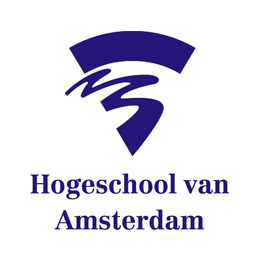In recent years, there has been an exponential increase in the use of health and sports-related smartphone applications (apps). This is also reflected in App-stores, which are stacked with thousands of health- and sports-apps, with new apps launched each day. These apps have great potential to monitor and support people’s physical activity and health. For users, however, it is difficult to know which app suits their needs. In this paper, we present an online tool that supports the decision-making process for choosing an appropriate app. We constructed and validated a screening instrument to assess app content quality, together with the assessment of users’ needs. Both served as input for building the tool through various iterations with prototypes and user tests. This resulted in an online tool which relies on app content quality scores to match the users’ needs with apps that score high in the screening instrument on those particular needs. Users can add new apps to the database via the screening instrument, making the tool self-supportive and future proof. A feedback loop allows users to give feedback on the recommended app and how well it meets their needs. This feedback is added to the database and used in future filtering and recommendations. The principles used can be applied to other areas of sports, physical activity and health to help users to select an app that suits their needs. Potentially increasing the long-term use of apps to monitor and to support physical activity and health.
DOCUMENT

Background: Recently, research focus has shifted to the combination of all 24-h movement behaviors (physical activity, sedentary behavior and sleep) instead of each behavior separately. Yet, no reliable and valid proxy-report tools exist to assess all these behaviors in 0–4-year-old children. By involving end-users (parents) and key stakeholders (researchers, professionals working with young children), this mixed-methods study aimed to 1) develop a mobile application (app)-based proxy-report tool to assess 24-h movement behaviors in 0–4-year-olds, and 2) examine its content validity. Methods: First, we used concept mapping to identify activities 0–4-year-olds engage in. Parents (n = 58) and professionals working with young children (n = 21) generated a list of activities, sorted related activities, and rated the frequency children perform these activities. Second, using multidimensional scaling and cluster analysis, we created activity categories based on the sorted activities of the participants. Third, we developed the My Little Moves app in collaboration with a software developer. Finally, we examined the content validity of the app with parents (n = 14) and researchers (n = 6) using focus groups and individual interviews. Results: The app has a time-use format in which parents proxy-report the activities of their child, using eight activity categories: personal care, eating/drinking, active transport, passive transport, playing, screen use, sitting/lying calmly, and sleeping. Categories are clarified by providing examples of children’s activities. Additionally, 1–4 follow-up questions collect information on intensity (e.g., active or calm), posture, and/or context (e.g., location) of the activity. Parents and researchers considered filling in the app as feasible, taking 10–30 min per day. The activity categories were considered comprehensive, but alternative examples for several activity categories were suggested to increase the comprehensibility and relevance. Some follow-up questions were considered less relevant. These suggestions were adopted in the second version of the My Little Moves app. Conclusions: Involving end-users and key stakeholders in the development of the My Little Moves app resulted in a tailored tool to assess 24-h movement behaviors in 0–4-year-olds with adequate content validity. Future studies are needed to evaluate other measurement properties of the app.
MULTIFILE

Abstract: The primary aim of the dissertation was to develop and evaluate a smartphone app, the WhiteTeeth app, designed to promote good oral health behaviour and oral hygiene among adolescent orthodontic patients between the ages of 12 and 16. The app's development and evaluation was guided methodically by intervention mapping (IM). Development thus starts with an analysis of the health problem and the identification of the psychosocial factors and health behaviour related to it. To identify the psychosocial factors underlying oral health behaviour in our target group, a systematic literature review with meta-analysis was conducted,a cross-sectional clinical study and semi-structured interviews. Then, to target these psychosocial factors and facilitate continuous behavioural support, various behaviour-changing techniques were incorporated into the app. The app provides feedback on users' oral health behaviour and allows users to evaluate and monitor their behaviour. Finally, a randomised controlled trial was conducted. This showed that the app had improved oral hygiene in adolescent orthodontic patients after 12 weeks.
LINK
As the Dutch population is aging, the field of music-in-healthcare keeps expanding. Healthcare, institutionally and at home, is multiprofessional and demands interprofessional collaboration. Musicians are sought-after collaborators in social and healthcare fields, yet lesser-known agents of this multiprofessional group. Although live music supports social-emotional wellbeing and vitality, and nurtures compassionate care delivery, interprofessional collaboration between musicians, social work, and healthcare professionals remains marginal. This limits optimising and integrating music-making in the care. A significant part of this problem is a lack of collaborative transdisciplinary education for music, social, and healthcare students that deep-dives into the development of interprofessional skills. To meet the growing demand for musical collaborations by particularly elderly care organisations, and to innovate musical contributions to the quality of social and healthcare in Northern Netherlands, a transdisciplinary education for music, physiotherapy, and social work studies is needed. This project aims to equip multiprofessional student groups of Hanze with interprofessional skills through co-creative transdisciplinary learning aimed at innovating and improving musical collaborative approaches for working with vulnerable, often older people. The education builds upon experiential learning in Learning LABs, and collaborative project work in real-life care settings, supported by transdisciplinary community forming.The expected outcomes include a new concept of a transdisciplinary education for HBO-curricula, concrete building blocks for a transdisciplinary arts-in-health minor study, innovative student-led approaches for supporting the care and wellbeing of (older) vulnerable people, enhanced integration of musicians in interprofessional care teams, and new interprofessional structures for educational collaboration between music, social work and healthcare faculties.
MUSE supports the CIVITAS Community to increase its impact on urban mobility policy making and advance it to a higher level of knowledge, exchange, and sustainability.As the current Coordination and Support Action for the CIVITAS Initiative, MUSE primarily engages in support activities to boost the impact of CIVITAS Community activities on sustainable urban mobility policy. Its main objectives are to:- Act as a destination for knowledge developed by the CIVITAS Community over the past twenty years.- Expand and strengthen relationships between cities and stakeholders at all levels.- Support the enrichment of the wider urban mobility community by providing learning opportunities.Through these goals, the CIVITAS Initiative strives to support the mobility and transport goals of the European Commission, and in turn those in the European Green Deal.Breda University of Applied Sciences is the task leader of Task 7.3: Exploitation of the Mobility Educational Network and Task 7.4: Mobility Powered by Youth Facilitation.
Mensen die moeite hebben met lezen en schrijven (laaggeletterden) zijn ondervertegenwoordigd in onderzoek, waardoor een belangrijke onderzoekspopulatie ontbreekt. Dit is een probleem, omdat zorgbeleid dan onvoldoende op hun behoeften wordt aangepast. Laaggeletterden hebben vaak een lage sociaal economische positie (SEP). Mensen met een lage SEP leven gemiddeld 4 jaar korter en 15 jaar in minder goed ervaren gezondheid vergeleken met mensen met een hoge SEP. Om laaggeletterden te betrekken in onderzoek, is het o.a. nodig om onderzoek toegankelijker te maken. Dit project draagt hieraan bij door de ontwikkeling van een toolbox voor toegankelijke (proefpersonen)informatie (pif) en toestemmingsverklaringen. We ontwikkelen in co-creatie met de doelgroep toegankelijke audiovisuele materialen die breed ingezet kunnen worden door (gezondheids)onderzoekers van (zorggerelateerde) instanties/bedrijven én kennisinstellingen voor de werving voor en informatieverstrekking over onderzoek. In de multidisciplinaire samenwerking met onze partners YURR.studio, Pharos, Stichting ABC, Stichting Crowdience, de HAN-Sterkplaats en de Academische Werkplaats Sterker op eigen benen (AW-SOEB) van Radboudumc stellen we de behoeften van de doelgroep centraal. Middels creatieve sessies en gebruikerservaringen wordt in een iteratief ontwerpende onderzoeksaanpak toegewerkt naar diverse ontwerpen van informatiebrieven en toestemmingsverklaringen, waarbij de visuele communicatie dragend is. Het ontwikkelproces biedt kennisontwikkeling en hands-on praktijkvoorbeelden voor designers en grafisch vormgevers in het toegankelijk maken van informatie. Als laaggeletterden beter bereikt worden d.m.v. de pif-toolbox, kunnen de inzichten van deze groep worden meegenomen. Dit zorgt voor een minder scheef beeld in onderzoek, waardoor (gezondheids)beleid zich beter kan richten op kwetsbare doelgroepen. Hiermee wordt een bijdrage geleverd aan het verkleinen van gezondheidsverschillen.
Centre of Expertise, onderdeel van Fontys
Centre of Expertise, onderdeel van Hogeschool van Amsterdam

Lectoraat, onderdeel van Saxion
